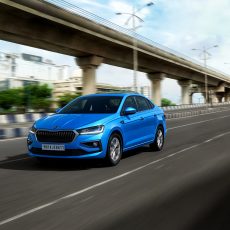Future Mobility
The second session of the Leader Forum discussed what future mobility has to offer, and was led by a panel that consisted of eminent personalites from automobile companies, component manufacturers and development support.
Takashi Uehara, Chief Engineer, Power Train Product Planning at Toyota Motor Corporation has majored in hydrocarbons and internal combustion. He highlighted how Toyota have been electrifying vehicles since the turn of the 1960s and, with the Prius, they managed to put the hybrid car on the world map. The combustion engine has been a part of their past and present, and will be a part of the future too. However, it may not necessarily rely on petrol. Hydrogen as a fuel is already being used in the fuel-cell electric vehicle, the Mirai. It, again, uses the same core components – battery pack, control electronics, and electric motor – together with a hydrogen fuel-cell. The emission from the powertrain is nothing but water.
Also read: Interview with Takashi Uehara at FISITA 2018
Dr Prashant Doreswamy, MD and India Market Leader at Continental, reasserted that India should pursue mild-hybrid technologies. He also highlighted the fact that a move to BS-VI should be accompanied by a clear policy for the scrappage of older vehicles. After all, what use would BS-VI norms in force do for already existing BS-IV, BS-III and in some cases even older vehicles on the road – both old petrols with their blue smoke and old diesels with their black soot?
Dr N Sarvanan of Ashok Leyland said that city pollution is not all due to vehicles. However, we need a clean and sharable public transport model as that is the key to solving most of the problems associated with mobility for the majority of the population.
Jan-Oliver Röhrl, Chief Technical Officer at Bosch Limited, strongly believes that we should spend on infrastructure, yes, not just roads but also for digitization. It is essential to have a technology-agnostic roadmap for emissions. He also mentioned that now, in Europe no one is talking about CO2 and everyone is talking about NOx. Adding a bit of humour towards the end of the session, he said “ If you want to charge, turbo-charge. Air is free.” However, he also reiterated that BS-VI must be taken very seriously. All the money spent on IC engine research is well-spent. The combustion engine still has a role to play and optimizing it is critical. He also stated that India has a huge potential for solar and photovoltaic energy.
Also read: Interview with Jan-Oliver Röhrl ahead of FISITA 2018
Dr Alexander Hägele, VP Car Chassis Technology Development at ZF Friedrichshafen, also agreed that a technology-agnostic approach is essential. One solution doesn’t fit all. Battery-electric vehicles are best suited to low-range application. This will keep costs down and help make the most of its characteristics. For longer jaunts or cross-country trips, a hybrid or PHEV will be better suited. Heavy vehicles used for transport, too, cannot rely on electricity alone; a hybrid powertrain is essential. One point is that we cannot be stagnant and wait. The alternative to wait is not given. We have to move.
From the above views, it’s clear that what we need are small engines, battery packs and electric motors working together in a small, lightweight vehicle. However, the vehicle is only one aspect. People need to be more responsible on the road. If everyone follows traffic lights, stays in their appropriate lanes and shuts off their engines at long red lights, there would be huge savings right there, and not just in monetary terms. Overall safety would also benefit. There is a critical need for India to teach road manners in the early years in school. The biggest challenge in India is to get people to follow the rules. There are many laws but hardly any enforcement. In many cities in India, traffic violations are in the thousands every minute. How do you change the mindset of a person who thinks breaking the law – by driving on the wrong side, running a red light, or driving in a risky zig-zag manner – and getting away with it is a great thing to do? This is one aspect that needs to be addressed on a war footing. Only then will trickles of change begin to become evident.
Also read: A Look at Future Propulsion





Pingback: New Toyota Camry Hybrid First Drive Review - Car India